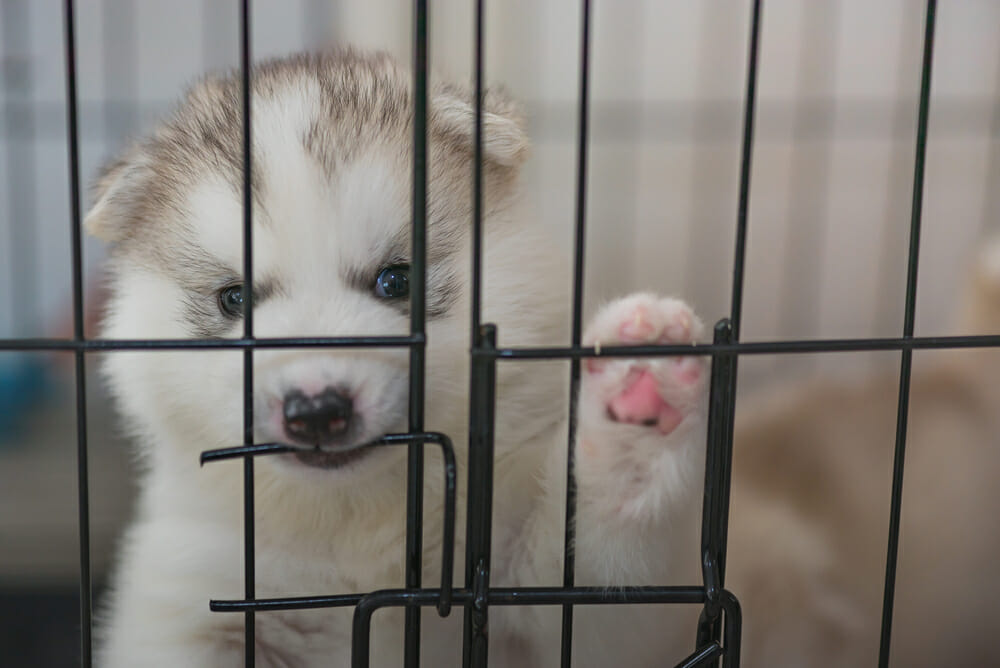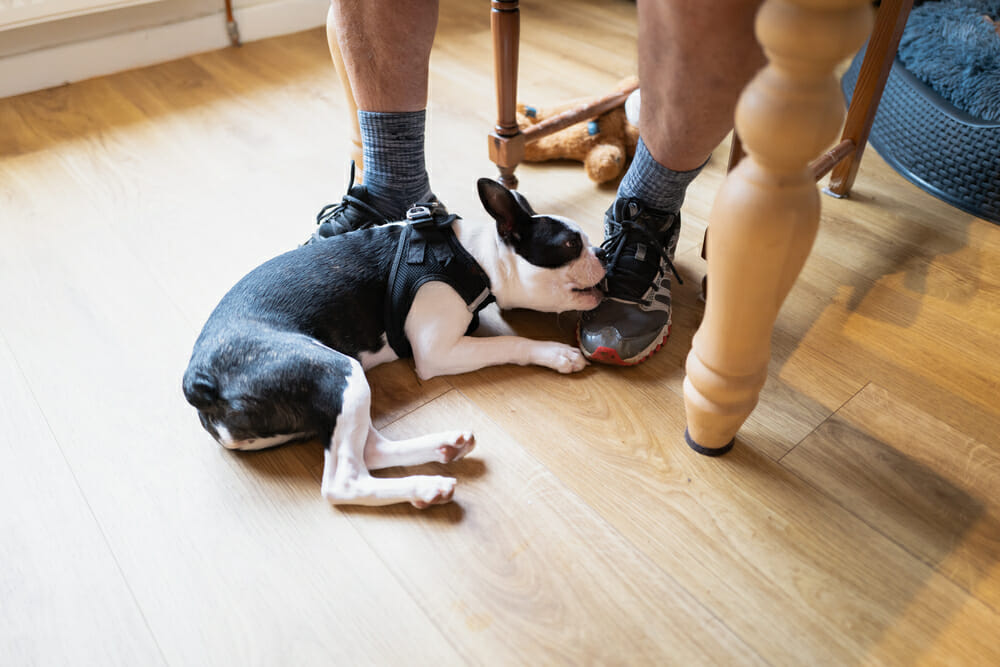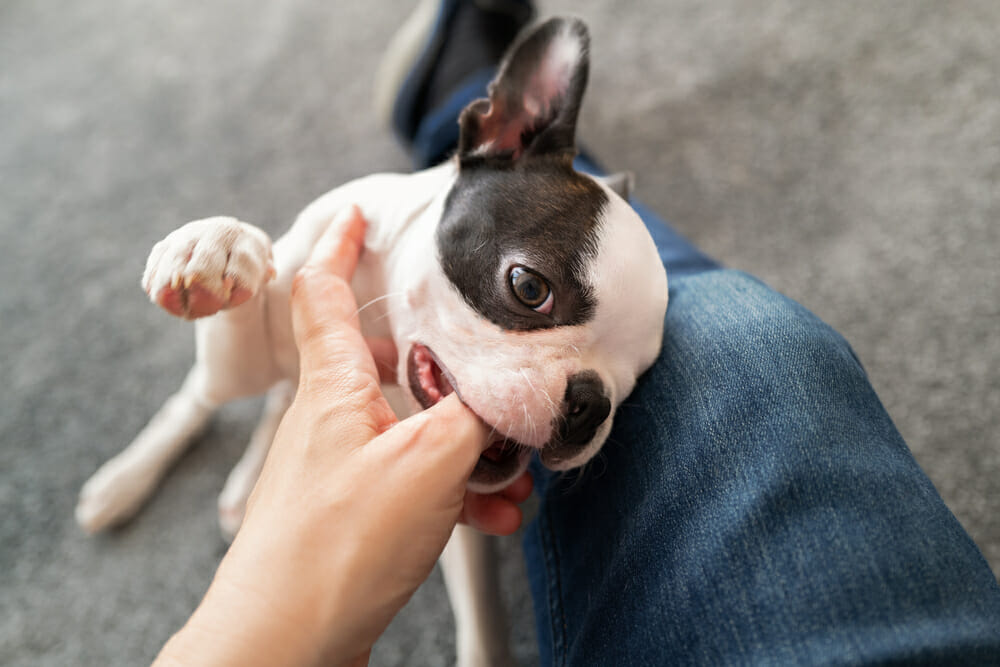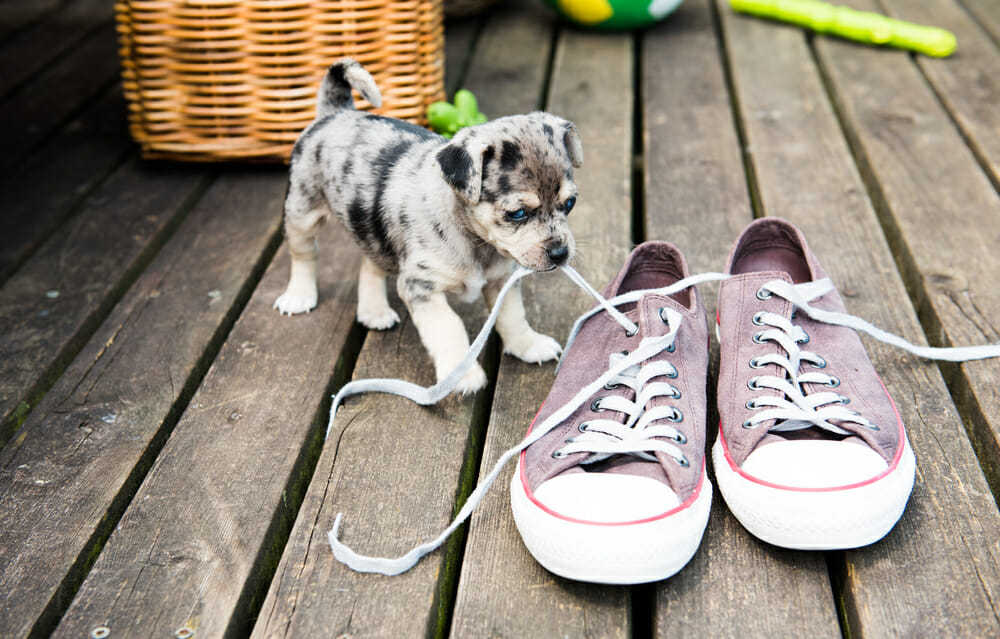Oh the joys of the puppy teething phase! We are here to report that this stage in your dog’s life is unavoidable. In this teething phase, you might start to believe that your puppy was designed to eat you, but in reality, it’s natural for puppies to communicate using their mouths, so they think that this is how they should communicate with us. It’s our role as their parents and guardians to teach them other, more desirable, forms of communication with humans. Puppies use all of their senses to explore their world and the new people they meet. They use their mouths to gather information about us and provide us with affection. Though this sounds very cute, their shark-like teeth have left many of our hands and faces scratched up and our clothes torn apart. Puppy teeth can be destructive and you don’t want to end up needing to replace your furniture or lose your security deposit from shredded molding. Here are some tips on how to survive the puppy teething woes!
Management: Prevent the behavior from happening in the first place
Your puppy should be monitored at all times so they don’t have the chance to get into mischief. If you’re not able to keep all eyes on your puppy this is when you would want to use your playpen, crate, or put a leash on them so you can keep them near you at all times. When they are supervised, or otherwise confined, 24/7, you have the opportunity to stop an “undesirable” behavior from happening (like chewing on furniture or biting through a shoe) and can redirect them to the “desirable” behavior that you’d like from them instead (chewing on their toy or bone).

You can also keep a log of your dog’s behavioral patterns. What times of day are they most bitey and unruly (aka their “witching hour”)? Is it first thing in the morning? The early evening? Preempt the witching hour by confining them to their crate or play-pen and/or giving them something to chew on like a bully stick or frozen kong or an activity like a puzzle toy before they get riled up, to prevent the nipping from happening in the first place.
Redirection: Redirect your puppy to a “legal” item to chew on or a more desirable behavior
Your puppy does not yet know that chewing on your clothes, hands, hair, furniture or corners of the wall are “bad”. When your puppy has the urge to chew we want to help teach them they should seek out items that are “appropriate” such as their toys or bones. When we see that our puppy is taking interest in something they shouldn’t be chewing on we want to use a positive interrupter like a kissy noise to get their attention right away and subsequently provide them with the “right” item to chew instead.

Another option is to try to get your puppy to exhibit a more calm behavior such as “sit” or “down” and reward them with yummy food for this behavior so it is eventually repeated over time.
When puppies are going through their teething stage we have to remember that their gums hurt and we need to provide something to help soothe them.
Some of our favorite DIY soothing chew ideas include: freezing a carrot, freezing your pup’s toys or bones to make them harder and last longer, ice cubes, and wetting a washcloth with water or dog friendly beef/chicken broth and then rolling up and place in the freezer.
Does your puppy ever get so excited to play with you that no matter how many times you try to redirect them to their toy there is no stopping them from nipping you?

In those scenarios, we would suggest a few options to help stop them from continuing this behavior:
Remove yourself from the play session
Communicating with your puppy through body language can be very powerful. Dogs actually read our body language more clearly than they do our verbal communication, so if your puppy is not able to be redirected or calm after they’re given several opportunities, you should leave the room or place a barrier between you and your pup for a moment to show them that they no longer have the ability to play with you. This helps them learn that if they are providing the undesirable behavior, such as nipping you, they lose the thing that they want most in that moment (to play with you). It creates an association that the nipping behavior makes you go away while their calm behavior results in the reward of interacting with you.
Put them on leash
The leash is a great management tool for moments where you might not have access to your crate or playpen. Putting a leash on your puppy during the moments they are needing to be redirected the most helps them stay out of trouble and not have the ability to be destructive. Your puppy should only have “freedom to roam” if you know they won’t be destructive and won’t have any potty accidents. They should still be monitored at all times even if they have the ability to roam.
Place them in the crate or playpen area
Sometimes puppies are overtired and may need a nap in order to help settle down. If you have given your puppy a few opportunities to provide you with a more desirable behavior and they aren’t able to stop nipping then you can gently direct them to their crate for a little time out. Using your crate as a management tool is not going to ruin your positive crate association if you direct them to the crate gently and don’t force them into the crate. Always give your puppy a yummy treat when they go into their crate, and a frozen toy or snack may be just what they need to satisfy their painful teeth.
We hope these tips and tricks from the experts help to save you that new pair of shoes from your teething pup! 😉




















